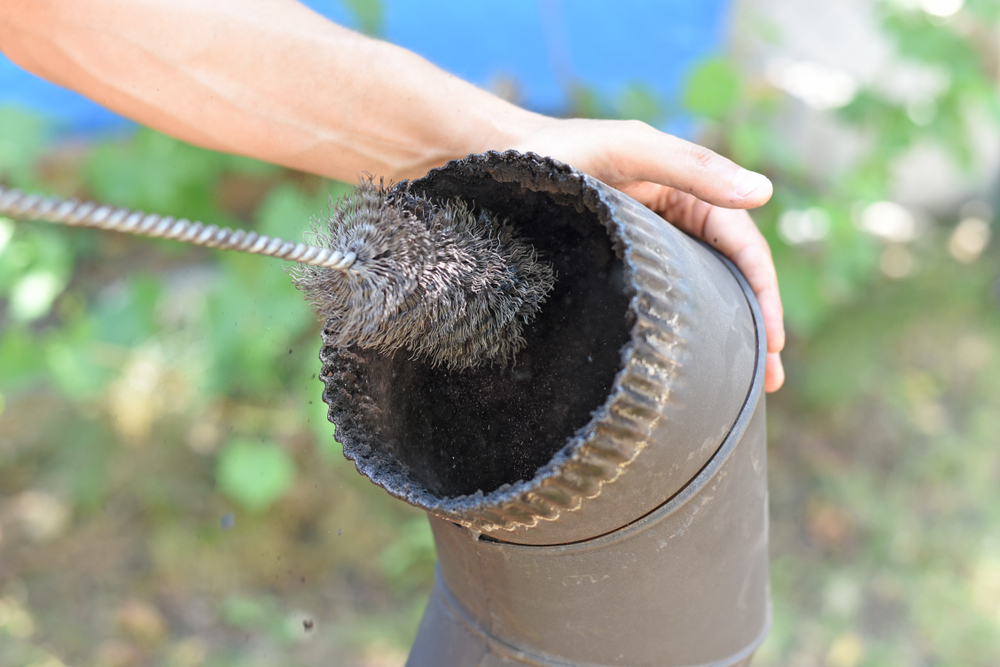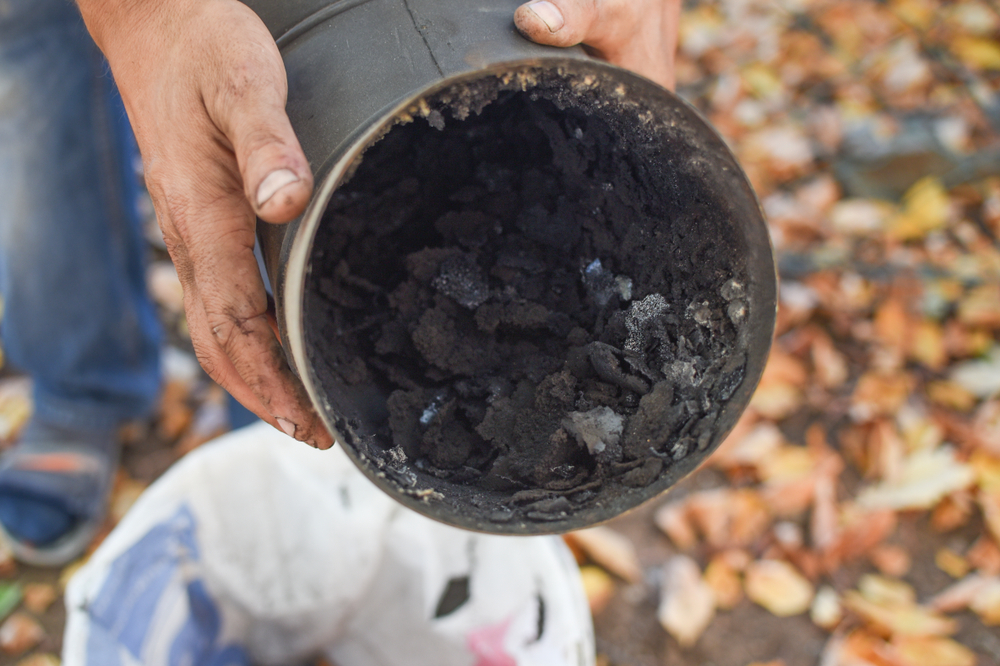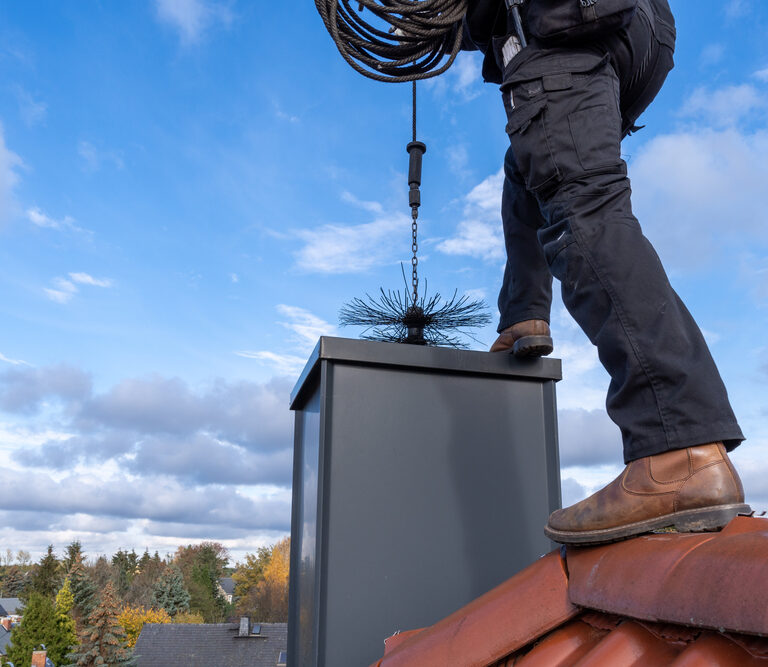It may not be something you think about until Santa Claus catches fire mid-slide, but your chimney needs regular cleaning, same as the rest of your house.
If you’ve never cleaned your chimney, though, you may not know where to start (we recommend starting by grabbing a fire extinguisher and putting Santa out).
In the guide below, we’ll tell you everything you need to know about keeping your chimney as clean as a whistle. It’s not necessarily the easiest chore in the world, and it’s certainly messy, but it’s definitely something you should do every year.
How Do I Know if My Chimney Needs Cleaning?
It can be hard to know when to clean your chimney. After all, it’s nasty and soot-filled even under the best of conditions, so at what point should you start to worry?
There are a few signs that indicate that your chimney needs some TLC. Look for the following:
- The fireplace smells like a campfire, even when there’s not a fire in it at the time.
- It takes a lot of work to start fires and keep them going.
- The entire house gets smokey, even if the flue is open.
- The walls of the fireplace have oily marks on them.
- The damper is black.
- You’ve noticed evidence of animals inside it, such as squirrels or birds.
How often your chimney will need to be cleaned depends on how often you use it. As a general rule, though, you should clean it once a year (before you start using it regularly).
Before You Get Started
You’ll want to collect all the necessary cleaning equipment before you get started. Cleaning a chimney doesn’t require a lot of specialized gear, but there’s a bit of safety equipment you should get as well.
As tempting as it may be, you shouldn’t skimp on the safety stuff. Chimneys are filthy places, and you don’t want to breathe in whatever’s floating around inside (or get it in your eyes or mouth).
Here are the things you should have on hand before you start cleaning:
- Drop cloths
- Plastic sheeting
- Dust mask
- Safety glasses
- Safety harness
- Shop vac
- Flashlight
- Chimney brushes
- Duct tape
- A ladder tall enough to reach your roof
- A screwdriver
You’ll want to make sure that the brushes you have on hand are long enough to completely clean your chimney, so it will also be helpful to have a general idea of the chimney’s dimensions.
How to Clean Your Chimney

Once you’ve assembled the necessary gear, it’s time to get started. While cleaning a chimney is an essential chore, it’s also a dirty one, so be prepared in advance.
We should also note that, if you suffer from asthma or other respiratory issues, you’re probably better off hiring a professional or forcing a neighbor to do it at gunpoint than cleaning it yourself.
Preparing Your Home
Taking all the necessary steps to get ready to clean the chimney is as important as doing the actual cleaning itself. This part is tedious, but if you don’t do it, you’ll have soot and ash all over the place.
Step 1.
Tape some plastic sheeting over the fireplace to prevent the debris you knock loose from getting all over the house. You’ll still likely have some gunk to deal with, of course, so it’s a good idea to cover the area with drop cloths as well.
You may want to put the hose of your shop vac inside the sealed-off area. Once you get started, you can just turn the vacuum on so that it will catch a lot of the dirt and debris that falls down the shaft. It won’t catch everything, of course, but every little bit helps.
Step 2.
Once you have the inside of your home ready to go, it’s time to climb on the roof. We recommend rigging up a safety harness for this part, as it’s surprisingly easy to fall off your own roof or a ladder (and it’s not good for your health).
Step 3.
Find your chimney cap and remove it; this should simply require taking out a few screws. If you don’t have a chimney cap, you should get one (like this offering from HY-C), as they help keep leaves, animals, and other unwanted visitors from getting into your chimney. Not only will this make things safer, but it will also cut down on how frequently you need to perform maintenance.
Cleaning the Chimney
Now that the inside of your house is protected and you’re on the roof, it’s time to get to work. You’ll need your brushes and the flashlight for this part — we’re assuming you already have all the safety gear on like a smart person, correct?
Most chimney brushes have fiberglass rods that you can attach to them, allowing you to customize the length of the brush. We recommend starting from the base of the chimney and working your way up, so you’ll want to make the brush as long as possible to begin.
Step 1.
Turn the brush clockwise as you move it up and down the walls of the chimney (some brushes are designed to attach to drills that will handle this part for you). This will help dislodge anything that’s stuck to the chimney. You’ll want to do this until you’ve cleaned every part of the chimney.
Step 2.
When you’re done, take your flashlight and inspect your work to make sure you didn’t miss anything. If it all meets your standards, congratulations — you’ve successfully cleaned your chimney!
Step 3.
Once the flue is cleaned, you’ll also want to clean out any soot deposits around the damper, smoke shelf, and firebox.
Why Do I Need to Clean My Chimney?
Cleaning your chimney isn’t just about being fastidious. It’s also extremely important for your safety.
If you burn wood in your fireplace, it will create something called “creosote.” Creosote is a tar-filled byproduct of wood combustion, and it’s extremely flammable.
As you burn more and more wood, all that creosote builds up inside your flue. If the accumulation gets bad enough, it can block your chimney entirely.
That’s obviously not good on its own, but as you can likely imagine, it’s generally not recommended to have a ton of super-flammable buildup lurking inside your chimney. If it catches fire, it can burn your house down in no time at all.
Not only will a clean chimney be safer for you and your family, but it will also make your fires smell better and be easier to maintain. Fires burn better in clean chimneys, requiring less work from you.
You also won’t have to deal with the smoke filtering back into your house as it gets blocked by all that creosote.
Do Creosote Sweeping Logs Work?
Some companies, like Pine Mountain, sell special creosote sweeping logs that can help prevent creosote from building up or help dislodge any that might already be stuck to the walls of your flue. This is easier than cleaning the chimney, of course, but do they really do anything?
As it turns out, they do work — up to a point, anyway. They’re better used for maintenance, so we’d recommend burning them after you’ve already cleaned your chimney for the year.
Don’t expect them to replace your annual cleaning, though. You’ll still need to tend to your flue every year, regardless of how many creosote sweeping logs you’ve burned in the meantime.
Can’t I Just Hire Someone to Clean My Chimney for Me?
Certainly. Professional chimney sweeps will be happy to do the job for you — for a nominal fee, of course.
Most chimney sweeping services charge a few hundred bucks to do the job, depending on how much work will be required. Keep in mind, though, that this is a once-a-year service, so that might be a small price to pay to save you from a dirty and potentially dangerous task.
If you have a lot of creosote buildup inside the flue, it’s probably a good idea to let a pro handle it. You don’t want to take chances with your safety, and they may have tools or techniques that are more effective than what you’ll have at home.
While hiring a professional chimney sweeping service isn’t a bad idea, it’s also smart to know how to do the job yourself, just in case (knowing how to do the job also gives you the tools necessary to evaluate their work, so you can stare over their shoulder suspiciously while they work).
Also, we don’t want to disappoint you, but professional chimney sweeps rarely perform elaborate dance numbers across the rooftops. It seems as if that dastardly Mary Poppins has lied to us yet again.
Final Thoughts

There are few maintenance jobs as dirty and thankless as cleaning a chimney — but there aren’t very many that are as important, either. If you don’t keep your chimney clean, you could put your entire family in danger.
This guide should tell you everything you need to know to do the job yourself, but we won’t judge you if you decide to hire someone to do it for you instead. All that matters is that the job gets done.
After all, we can’t have Santa bursting into flames at your house again this year.
